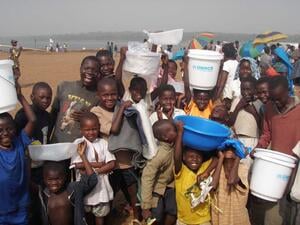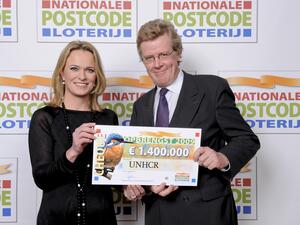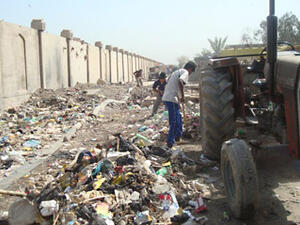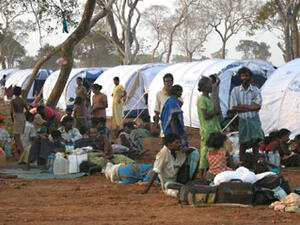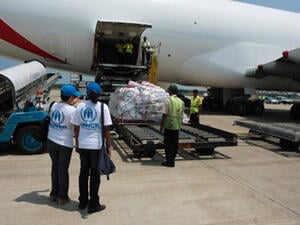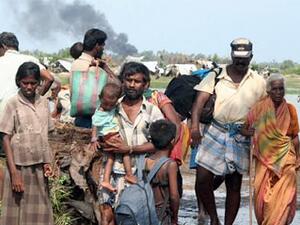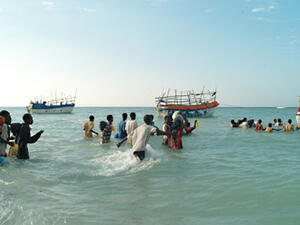New groups of Central Africans flee to Chad
New groups of Central Africans flee to Chad
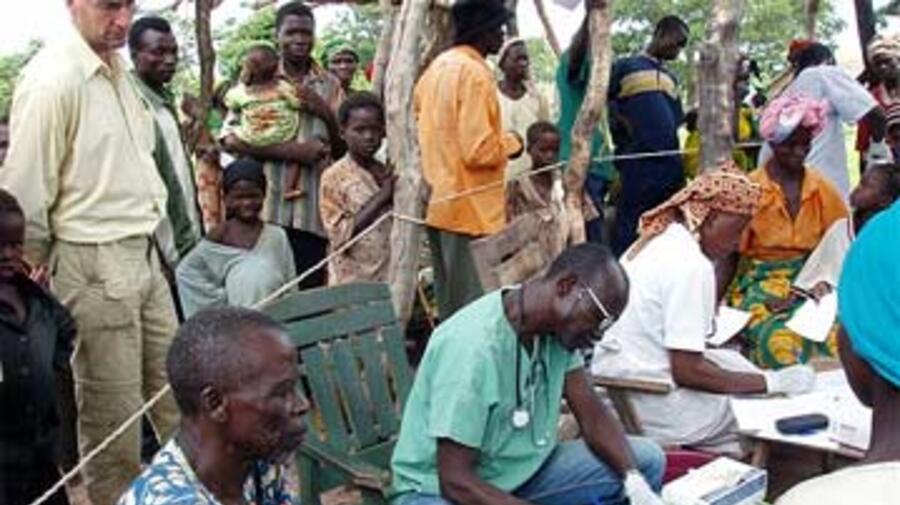
An earlier wave of Central African refugees receiving medical attention from Italian NGO COOPI near Gore in southern Chad.
GORE, Chad, August 19 (UNHCR) - An estimated 4,000 Central Africans have arrived in southern Chad in recent days, saying they fled attacks by armed groups in north-western Central African Republic. UNHCR has joined inter-agency efforts to assess the situation on both sides of the border.
According to the Chadian authorities, some 4,000 refugees have crossed into southern Chad in the last eight days. On Tuesday, a joint assessment mission comprising staff of UNHCR, the World Food Programme, Italian non-governmental organisation COOPI and Chadian refugee authorities CNAR (Commission Nationale d'Accueil et de Réinsertion des Réfugiés) drove to meet the refugees in the Chadian border villages of Bala, Békoninga, Beyoko and Kaba.
The new arrivals told UNHCR they fled attacks by unidentified armed groups on August 7 and 9 on Central African villages in the Paoua region, including in Badatongo, Bebigui, Bedaya, Bedogo, Yene and Paoua. They cited lootings and fear of violence as reasons for leaving their homes.
"In Békoninga [Chad], the refugees are being sheltered in classrooms or in the homes of local inhabitants who are also generously sharing their food with them," UNHCR spokeswoman Jennifer Pagonis told journalists in Geneva on Friday. "Another group of refugees is being hosted in a warehouse offered by the chief of the village of Bala."
COOPI has diagnosed three cases of minor malnourishment among the refugees. In general, the health situation of the refugees seems stable, but it could quickly deteriorate if the refugees remain at the volatile border.
"The new arrivals do not have latrines at their disposal. They go in the bush, near the river where the host population and refugees collect water to drink and for their daily needs. With the rains and flooding, we fear that there could be a high risk of diseases," said George Menze, who heads the UNHCR office in Goré town, located about 40 km from the affected border villages.
Together with CNAR, a UNHCR protection team is already on the ground to screen and pre-register the refugees. The UN refugee agency is working with the Chadian government to evaluate the possibility of a new site to relocate the refugees, preferably near an existing camp at Amboko.
Amboko, the closest refugee camp to the border, already hosts 20,000 refugees - including 7,000 who were relocated in July from the border after fleeing clashes in the Central African Republic in June. The remaining free space in the camp is currently being used for the refugees' farming activities.
The recent arrivals constitute the third major wave of Central African refugees to southern Chad. In June and July this year, some 10,000 of them crossed the border following clashes between government forces and unidentified armed groups back home. And, in 2003, about 30,000 refugees crossed into Chad after a military coup in the Central African Republic.
There are now more than 45,000 Central African refugees in southern Chad, most of them hosted in Amboko and Yaroungou refugee camps.
To get a fuller picture of the situation in the Central African Republic that is causing the refugee outflow, a UN Inter-agency mission visited the refugees' villages of origin in the north of the country last week. The mission's findings are expected in the coming days.
In addition to the Central African refugees, Chad is also hosting over 200,000 Sudanese refugees from the Darfur region in 12 camps in the east.

